Madhesh Province
Madheshi activists take to the streets to call for long-term solutions to Tarai water crisis
Unplanned deep boring might solve the current problem, but in a few years, it could worsen the water crisis, they warn.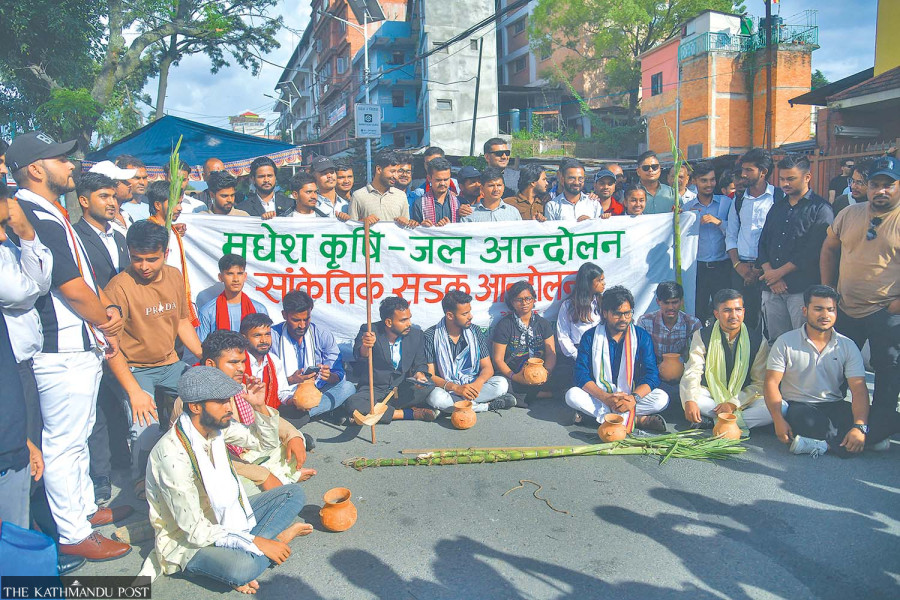
Post Report
On Friday evening, the Maitighar Mandal in Kathmandu suddenly came alive with the tunes of a folk song. The beats of the madal and notes of harmonium accompanied the song. It, however, was not a concert, and the people performing it were not artists seeking to enthrall the audience. Instead, they were at the Mandal, a popular venue for protests, to make their voices heard.
“Pani bina sukhal jayat sara jaminiya…,” went the song. “Kehu ke najariyo parena... kaise jiyat kisanwa?” [All the lands are drying without water… Nobody’s paying attention… How will farmers survive?]
The crowd was composed mostly of young activists, numbering around 100, some of them donning ethnic Madheshi attire and others college uniforms. In a symbolic protest, they held ceramic pots and a wooden plough. These Madheshi youths from both Madhesh and Kathmandu were demanding urgent and lasting solutions to the water crisis in Tarai-Madhesh. Short-term solutions like deep boring wouldn’t cut it and are instead likely to backfire, they said.
The demonstration was organised under the banner of the Madhesh Krishi-Jal Aandolan (Madhesh agro-water movement).
“The situation in Tarai right now is dire,” said Ravi Pandey, a law student. “The only silver lining I see is how finally public attention has turned to the water crisis and Chure destruction in Tarai.”
He added, “Nobody listened to the voice of Madhesh before…now they can see how destruction of natural resources like Chure can affect day-to-day life, to the point of no water to drink.”
The water crisis in Tarai is not new. Activists have long warned of the consequences of environmental degradation in the region. Last year, under the Chure Conservation Campaign, a group of activists marched for 25 days from Saptari to Kathmandu, carrying empty buckets to symbolise water scarcity.
They staged a sit-in for more than three months, demanding action on Chure destruction and water facilities. Yet, according to them, the government took no action.
As rainfall continued to evade the region, the Madhesh government declared all eight of its districts drought-hit.
On July 23, the federal government followed suit, designating Madhesh a crisis-ridden zone. Prime Minister KP Sharma Oli conducted an aerial inspection of the affected areas.
Local authorities in Madhesh Province are using tankers and fire engines to distribute drinking water to some of the worst-hit districts. But activists say the reliance on emergency supplies and deep boring is inadequate.
Youth leaders argue the government’s response lacks foresight. “The initiative from the government is not well thought out or well researched,” said Raj Yadav, an activist from Rautahat.
According to Yadav, the deep boring facility can further affect the soil and its fertility levels in the long run.
While deep boring is necessary given the current water scarcity, it should not be carried out without proper feasibility studies, added activist Anjali Sah.
She explained that in many villages, those who could afford it had already installed deep boring systems. But when one farmer draws underground water without regulation, it dries out nearby fields, leading to further shortages.
“Unplanned deep boring might solve today’s crisis, but in two to three years, it could worsen the water crisis,” she warned.
The protesters laid out a series of demands. They called for immediate relief and cash compensation to drought-affected farmers who were unable to plant paddy this year.
They have urged the government to ensure drinking water in every ward of the Tarai-Madhesh, not through fire trucks but through a reliable and sustained system.
Another demand was for the irrigation tools and agricultural electrification to be made free and accessible to all, and provided in every ward. They also called for an immediate halt to riverbed extraction and its export in Koshi, Madhesh, and Lumbini provinces.
A central demand was for the government to enact and enforce a Chure Conservation Act, to protect the fragile region through afforestation and pond restoration.
“The reality that the government has long followed a policy of neglect, exploitation, and disregard towards the Tarai-Madhesh has once again become evident,” their demand letter reads.
The activists worry that the Tarai-Madhesh is on the path to becoming a desert due to the destruction of the Chure hills, unscientific extraction of resources, forest encroachment, lack of irrigation, and environmental imbalance.
“So why hasn’t the government stopped the Chure destruction projects yet?” Sah asked. “That should be the utmost priority right now.”
Aside from Chure destruction, another contributing factor to the water shortage in Tarai, activists say, is the growing use of deep boring technology in the neighbouring Indian states of UP and Bihar.
“Since our borders are close, the underground water is naturally shared,” Sah added. “But Nepal and India don’t have any treaty on how much of that water can be used or how many deep borewells can be installed in the bordering areas.”
They have also called for the immediate construction of irrigation diversions in major rivers like Koshi, Gandak, and Kamala, and for long-delayed irrigation projects to be resumed without further delay.
“This struggle is not only for water, forests, and land,” the activists concluded. “It is also a movement for our existence, identity, and rights.”




 10.12°C Kathmandu
10.12°C Kathmandu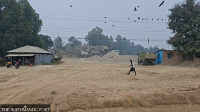

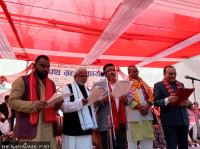


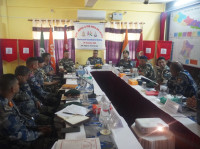
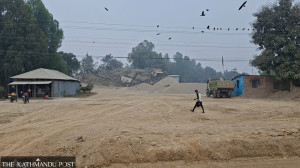



%20(1).jpg&w=300&height=200)

